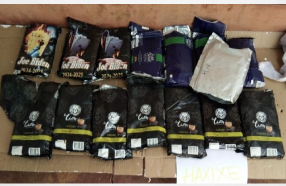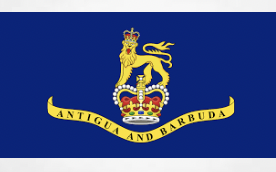Official statistics on busts of drug shipments originating in Colombia — the world’s largest cocaine producer by far — are scattershot and hard to find. A leak of prosecutor’s office documents helped reporters fill in some gaps.
Key Findings
- Drawing on leaked documents and official data, reporters identified 1,764 separate busts of cocaine originating from Colombia between 2016 and April 2022.
- About three quarters of these took place on small vessels, such as fishing boats or lobster trawlers.
- Out of the total, 431 cases took place on large ships, encompassing roughly 264.8 metric tons of cocaine, almost double the weight of the Statue of Liberty.
- Outside of Colombia, Belgium and Spain were the most common sites of seizures.
- Of seizures involving large ships, containers and vessels owned by the leading shipping firms Maersk and CMA CGM were the most frequently targeted by traffickers.
Early one summer morning, two small boats sidled up to the Cap San Tainaro, a container ship off the coast of the northern Colombian port city of Barranquilla. A dozen men raised ladders and scaled onto the vessel, and then, using ropes and pulleys, began to hoist up bags with hundreds of plastic packages, each of which contained a kilogram of cocaine.
A military helicopter patrolling the area spotted the men and hailed the ship. After four hours, they finally made contact and guided the vessel back to the dock, where authorities boarded it, found the drugs — over one metric ton in total — and arrested those
Few details of the bust, which took place on August 2, 2018, were included in the statistics reported by Colombia’s authorities. Instead, reporters uncovered the minute-by-minute account of the operation in a massive leak of documents from the country’s prosecutor’s office, known as the NarcoFiles .
In Colombia, the world’s largest cocaine producer, statistics on drug busts are scattershot and hard to find. At least four different agencies keep records of seizures, but they are not easily accessible to the public and often do not overlap.
When data is published, it typically includes little beyond the date, location, and amount of drugs seized. And Colombian authorities do not keep data on busts of Colombian shipments that take place abroad, making it difficult to understand the full picture of how drugs are smuggled out of the country.
These limitations make it harder for reporters and civil society to analyze trafficking trends. Drawing on the NarcoFiles, OCCRP’s partner, Cuestión Pública, has spent over a year building a database that aims to change that.
By combing through the leaked files, reporters identified 158 busts of drug shipments that originated in Colombia. They then created a more comprehensive database by contacting Colombia’s defense ministry, prosecutor’s office, navy, and police, and filing freedom of information requests to gain access to their records. The data was also supplemented by reports from Belgium’s Customs Federal Service.
Read their full report at

















